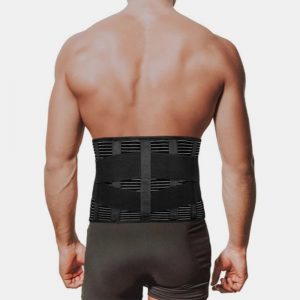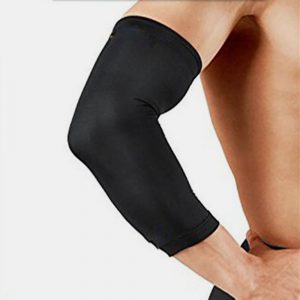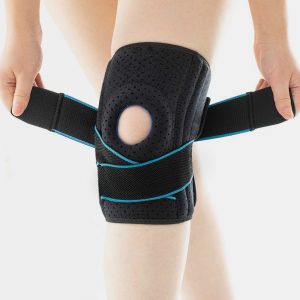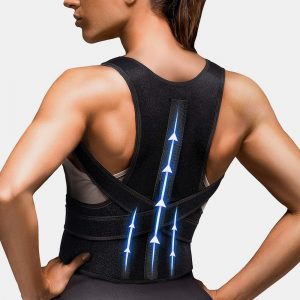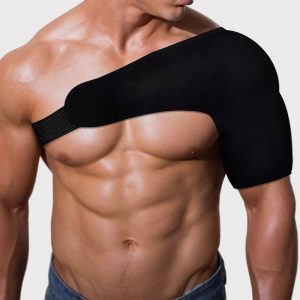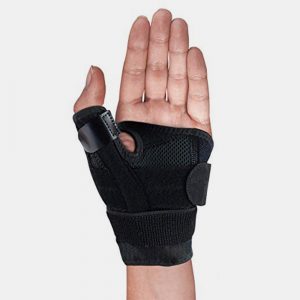
فهم إصابات الكتف في رفع الأثقال
رفع الأثقال هي رياضة تتطلب مجهوداً بدنياً كبيراً وتتطلب القوة والقدرة والتقنية الجيدة لتحقيق النجاح. ومع ذلك، فإنها أيضاً تجهد الجسم، وخاصةً الأكتاف، مما قد يؤدي إلى الإصابة إذا لم يتم الاعتناء بها بشكل صحيح.
واحدة من أكثر إصابات الكتف شيوعاً في رفع الأثقال هي تمزق الكفة المدورة، والتي تحدث عندما تتلف أو تتمزق الأوتار التي تربط عضلات الكفة المدورة بعظم الكتف. يمكن أن تسبب هذه الإصابة الألم والضعف ومحدودية نطاق الحركة، مما يجعل من الصعب أداء تمارين رفع الأثقال.
من إصابات الكتف الشائعة الأخرى في رفع الأثقال تمزق الشفرة، والذي يحدث عندما يتلف الغضروف المحيط بمفصل الكتف أو يتمزق. يمكن أن تسبب هذه الإصابة الألم وعدم الثبات والإحساس بالطقطقة أو الفرقعة في الكتف.
متلازمة اصطدام الكتف هي إصابة أخرى يمكن أن تحدث في رفع الأثقال، والتي تنتج عن انضغاط الأوتار في الكتف أو انضغاطها أثناء حركات رفع الأثقال. يمكن أن يسبب ذلك ألماً وضعفاً في الكتف ويحد من نطاق الحركة.
يحتاج رافعو الأثقال إلى فهم مخاطر هذه الإصابات وغيرها من إصابات الكتف واتخاذ خطوات للوقاية منها، مثل دمج تمارين تقوية الكتف في روتينهم التدريبي وارتداء دعامة الكتف لمزيد من الدعم والثبات أثناء تمارين رفع الأثقال.
فوائد ارتداء دعامة الكتف أثناء رفع الأثقال
يمكن أن يوفر ارتداء دعامة الكتف أثناء رفع الأثقال العديد من الفوائد التي تساعد في منع الإصابة وتحسين الأداء. إليك بعض الفوائد الرئيسية لاستخدام دعامة الكتف:
- توفر الدعم: توفر دعامة الكتف الدعم والثبات لمفصل الكتف، مما يساعد على منع الإصابة ويقلل من خطر حدوث المزيد من الضرر إذا كنت تعاني من إصابة حالية.
- يحسن وضعية الجسم: تُعد الوضعية السليمة أمراً ضرورياً لرفع الأثقال، ويمكن أن تساعد دعامة الكتف في تحسين وضعية الجسم من خلال الحفاظ على وضعية الكتفين في الوضع الصحيح.
- يزيد من الثقة: يمكن لارتداء دعامة الكتف أن يعزز ثقتك بنفسك أثناء رفع الأثقال، مما يوفر شعوراً بالأمان والثبات لمفصل الكتف.
- تحسّن الأداء: من خلال توفير الدعم والثبات، يمكن لدعامة الكتف تحسين أدائك أثناء رفع الأثقال من خلال السماح لك برفع أوزان أثقل وأداء التمارين بمزيد من التحكم والدقة.
- تعزز التعافي: إذا كنت تعاني من إصابة في الكتف، فإن ارتداء دعامة الكتف يمكن أن يعزز التعافي من خلال تقليل الألم والالتهاب ومنع حدوث المزيد من الضرر.
اختيار دعامة الكتف المناسبة لاحتياجاتك في رفع الأثقال
رفع الأثقال هو نشاط شاق يتطلب مجهوداً بدنياً كبيراً ويمكن أن يجهد عضلات الكتف. وللوقاية من الإصابة وتوفير الدعم، يستخدم العديد من رافعي الأثقال دعامات الكتف. إليك بعض النقاط التي يجب أخذها بعين الاعتبار عند اختيار دعامة الكتف المناسبة لاحتياجاتك في رفع الأثقال:
- المقاس والملاءمة: تأتي دعامات الكتف بأحجام مختلفة، لذلك من المهم أن تجد دعامة تناسبك بشكل صحيح. قد يؤدي عدم ملاءمة الدعامة إلى تقييد الحركة أو انزلاقها من مكانها، مما يسبب ضرراً أكثر من نفعها.
- نوع الدعامة: هناك أنواع مختلفة من دعامات الكتف المتاحة، بما في ذلك الأكمام الضاغطة والأشرطة وأجهزة تثبيت الكتف. توفر الأكمام الضاغطة الدعم وتساعد على تقليل الالتهاب، بينما يمكن استخدام الأشرطة لتثبيت مفصل الكتف. تقيد المثبتات الحركة وتستخدم عادةً بعد الإصابة.
- الخامة: تُصنع دعامات الكتف من مواد مختلفة، مثل النيوبرين والنايلون والياف لدنة. النيوبرين متين ويوفر دعماً جيداً، بينما النايلون والياف لدنة مسامية وخفيفة الوزن.
- الراحة: من الضروري اختيار دعامة كتف مريحة عند ارتدائها، حيث من المحتمل أن ترتديها لفترات طويلة. ابحث عن الدعامات ذات الأشرطة القابلة للتعديل والحشوة وميزات امتصاص الرطوبة للحفاظ على برودة وجفاف جسمك.
- الغرض: ضع في اعتبارك الغرض المحدد لأنشطة رفع الأثقال عند اختيار دعامة الكتف. على سبيل المثال، إذا كنت تمارس رياضة رفع الأثقال، فقد تحتاج إلى نوع مختلف من الدعامة عن لاعب كمال الأجسام.
استخدام دعامة الكتف بالتزامن مع تقنية الرفع المناسبة
- تسليط الضوء على أهمية الجمع بين دعامات الكتف مع الشكل والتقنية الصحيحين لرفع الأثقال لتحقيق أقصى قدر من الفوائد في الأداء. فهم أسلوب الرفع الصحيح: قبل استخدام دعامة الكتف من الضروري فهم تقنية الرفع المناسبة. ويشمل ذلك ثني الركبتين والحفاظ على استقامة الظهر واستخدام الساقين لرفع الوزن.
- اختر دعامة الكتف المناسبة: تتوفر العديد من أنواع دعامات الكتف في السوق، وكل منها مصمم لإصابة أو حالة معينة. اختر الدعامة المناسبة لاحتياجاتك الخاصة والتي تناسبك بشكل مريح.
- ارتداء الدعامة بشكل صحيح: من الضروري ارتداء دعامة الكتف بشكل صحيح، حيث يمكن أن يؤدي الاستخدام غير السليم إلى مزيد من الإصابة. اتبع تعليمات الشركة المصنعة وتأكد من ملاءمة الدعامة بشكل مريح دون التسبب في الشعور بعدم الراحة.
- اجمع بين استخدام الدعامة وتقنية الرفع المناسبة: دعامة الكتف ليست بديلاً عن أسلوب الرفع السليم. بدلاً من ذلك، يجب استخدامها مع تقنيات الرفع المناسبة لتوفير دعم وثبات إضافي لمفصل الكتف.
- كن ثابتًا: يمكن أن تساعد دعامة الكتف في الوقاية من إصابات الكتف، لكن من الضروري استخدامها في كل مرة ترفع فيها أشياء ثقيلة أو تمارس أنشطة تجهد كتفيك.
استنتاج:
في الختام، يمكن لدعامات الكتف أن تعزز أداء رفع الأثقال بشكل كبير من خلال توفير الدعم والثبات للكتفين. يمكن للرياضيين رفع أوزان أثقل وتحسين أدائهم بشكل عام من خلال تقليل خطر الإصابة والسماح بالشكل المناسب.
WorldBrace هي الشركة الرائدة في تصنيع وتوريد دعامات الكتف في الصين. نحن نقدم مجموعة واسعة من المنتجات بأسعار الجملة. احصل على أفضل حمالات الكتف والاكسسوارات اليوم!


